There can be your advertisement
300x150
How to Protect Wooden Structures on the Dacha: Guide to Paints, Stains, Oils and Brushes
Indispensable tips from the pros
According to Wordstat requests, in 2022 the interest in rural home renovations increased by 12% compared to the previous 'pandemic' year, and requests for wood paint rose by more than a quarter. People continue to strive toward rural life. And many country homes are built from wood or at least use this ancient, heartfelt material. However, despite all its advantages, wood is the most expensive building and maintenance material. Without proper protection it quickly loses its properties and deteriorates, losing its attractive appearance.
Oksana Nasonova, Marketing Manager at PPG Tikkurila in Russia
Protecting Wood. Painting
Wood protection can be achieved through painting. This process is necessary primarily to ensure material preservation, and only then for decorative purposes. Unpainted wood is defenseless against external influences. Exposure to wind, rain and harsh sunlight will inevitably lead to faster decay, blackening, cracking, in other words, shortening the material's service life. Therefore, it is recommended to paint all wooden elements.
However, thermally treated wood is an exception. Due to heating to high temperatures in special equipment, the fibers of the wood change their structure. This treatment also destroys microorganisms in the wood, so neither fungi nor bacteria can reproduce in it, making additional protection unnecessary. In this case, painting may only be needed for decorative effect.
Painting materials for facades can have a wide range of colors — dozens of shades, so you can choose an accent to your taste. Also consider the product's resistance to direct sunlight, as pigments in painted surfaces fade and lighten under sun exposure. The more colorfast the coating is, the less often it will need to be renewed.
Lasure may also have special effects, for example, the product can contain tiny mica particles that make the painted surface sparkle like snow in the sun. Even a modest dark wood gains an elegant tone.
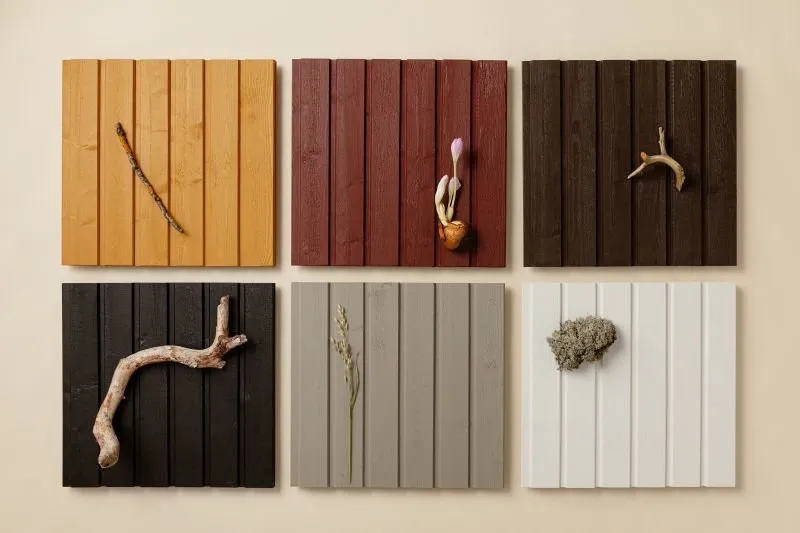 Pinterest
PinterestStains
The most commonly used material for wood protection are stains. The formula of a stain includes special additives (fungicides, biocides, UV filters etc.) that protect the material from biological damage — growth of fungi and mold. These natural processes occur under the influence of external environmental factors such as rain, wind, temperature fluctuations and direct sunlight.
When choosing a stain, pay attention to the combination of its protective and decorative properties. A stain can be semi-transparent (lasure), preserving the wood grain, or opaque, which like paint leaves only a slight surface texture. Opaque stains are convenient due to their versatility, as they can be applied on both new and previously painted surfaces. Semi-transparent coatings are recommended to be applied either on unpainted, pre-primered surfaces or previously painted with the same product and color wood. Otherwise, the wood will need to be sanded off completely removing the previous lacquer coating.
Another difference of semi-transparent stains is their lower durability compared to opaque coatings, including due to the amount of pigment that additionally protects the surface. The service life of high-quality opaque stains can reach up to 20 years, whereas semi-transparent stains protect the material for approximately 12-15 years.
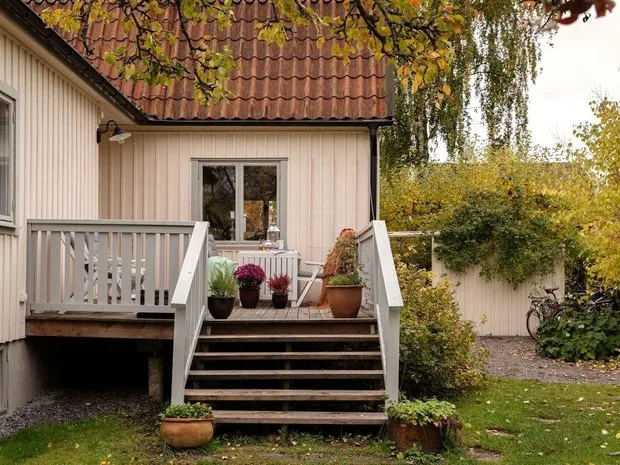 Pinterest
PinterestOils
However, stains are suitable only for vertical surfaces such as facades, fences or window frames and doors. They have excellent protective properties but are not designed for constant mechanical wear. Floors and stairs undergo much more intensive use. They must withstand the load of continuous walking, friction, falling objects and so on. They should not slip to ensure safety, but also be pleasant to touch for barefoot walking.
For horizontal surfaces like terraces or garden furniture, it is better to use special terrace oils. Oils penetrate deep into the wood, nourishing it and protecting from external influences. High-quality oils provide a safe non-slip surface even during rain. Terraces should be oiled annually before the start of the season. Well-maintained wood does not dry out, remains pleasant to touch so family members can walk barefoot on the terrace without fear of getting splinters. The service life of a terraced board also increases many times with proper care. Oils can be used to coat wooden furniture, gazebos, and other outdoor wood elements.
Oils can have various shades to match the main color scheme of the house or even complement furniture.
 Pinterest
PinterestWhen to Paint
Spring and summer are the most favorable seasons for painting. When working outdoors, temperature and humidity are important as well. The optimal air temperature for painting is 23 degrees Celsius. Lower temperatures mean longer drying time for the paint. Conversely, high temperatures cause fast evaporation (sometimes on the brush) and poor distribution across the surface. Too rapid drying deteriorates paint penetration properties, thus reducing its lifespan. Therefore, it is strictly not recommended to paint under direct sunlight or during rain, as these weather conditions can cause irreversible changes in the properties of the paint coating.
September is generally still considered a favorable season, whereas late October and subsequent months are often unsuitable for painting. In autumn people usually paint homes that were built during summer and prepared by autumn. In such cases, it is recommended to delay painting until spring, while covering the wood with a special primer that protects against biological damage until favorable season starts.
What to Use
Nearly all products from our brand portfolio can be applied with a roller, brush or spray. The application method affects the thickness of the layer which directly influences the appearance and decorative properties of the surface.
Since wood surfaces are uneven, a brush is the best and most effective tool for painting facades. It ensures optimal application, better penetration into wood grain, and more thorough coverage of grooves. A brush applies the correct amount of paint.
 Pinterest
PinterestBrushes
For water-based lacquer materials, it is better to use a brush with synthetic or mixed bristles but never natural. Natural bristles absorb the material, turning the brush into a 'mash'. It stops bending and loses its effectiveness.
On the contrary, organic materials destroy synthetic bristles but work perfectly with natural ones. Additionally, stains are often liquid in nature and natural bristle brushes hold the material due to their natural texture preventing dripping, making them easier to use.
Applicator
The best tool for applying oils is a special applicator. It's like a sponge that perfectly distributes oil across the surface. Very convenient to use and extremely economical since it does not absorb large amounts of material.
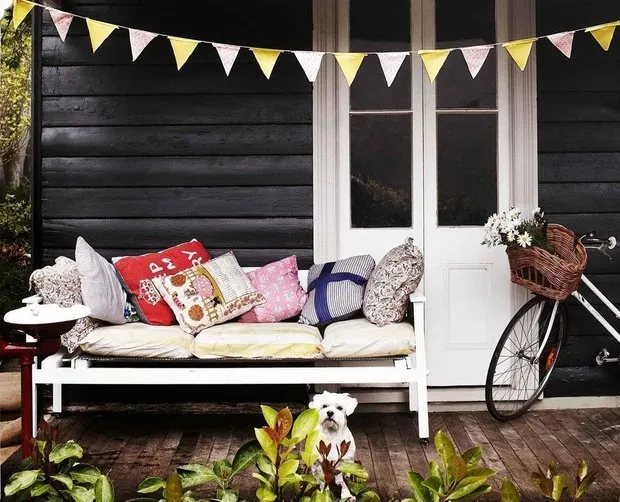 Pinterest
PinterestPro Tips:
If painting wood before assembly, first paint the joints, then assemble the structure and repaint again. This is necessary because wood dries out and expands, revealing unpainted gaps that look unattractive and are almost impossible to fix.
For logs, it is essential to measure moisture with a moisture meter; the parameter should be less than 20%, otherwise, moisture that will come out of the log will destroy the coating. Painted surfaces with stain may show streaks (tannins, 'bitten apple effect').
The quality and service life of a painted surface depends on many external factors: weather, condition and nature of the surface, tools. However, it is also greatly influenced by the properties of lacquer materials into which manufacturers invest experience and developing technologies. Today, there are products for any residential surfaces, and paints constantly improve — the richer a manufacturer's history, the higher the expertise of its technologists who over years working with the product face numerous specifics and difficulties that must be solved for consumers.
If you don't have much experience with lacquer materials, before purchasing you can consult the color studio of your paint manufacturer — specialists help not only select suitable products but also provide advice on working with the material.
More articles:
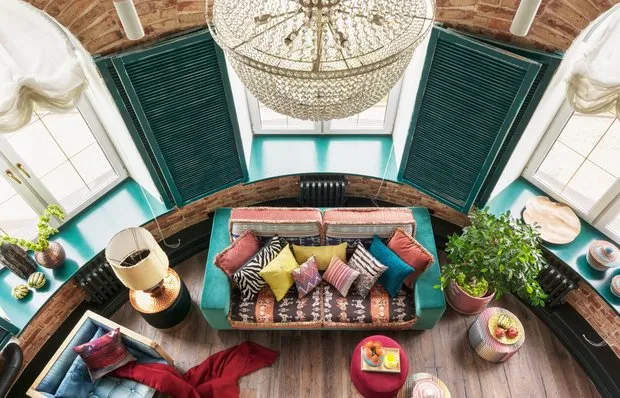 Unforgettable Interior of a Studio Apartment with 6-Meter Ceilings
Unforgettable Interior of a Studio Apartment with 6-Meter Ceilings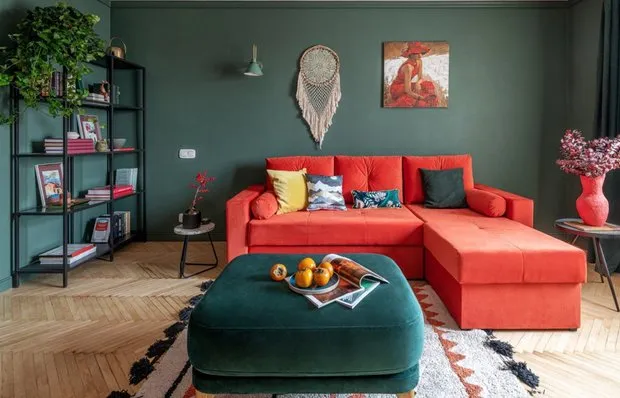 Proper Living Room Furniture Arrangement: 8 Steps to Success
Proper Living Room Furniture Arrangement: 8 Steps to Success Before and After: 5 Transformations of 'Exhausted' Apartments by Designers
Before and After: 5 Transformations of 'Exhausted' Apartments by Designers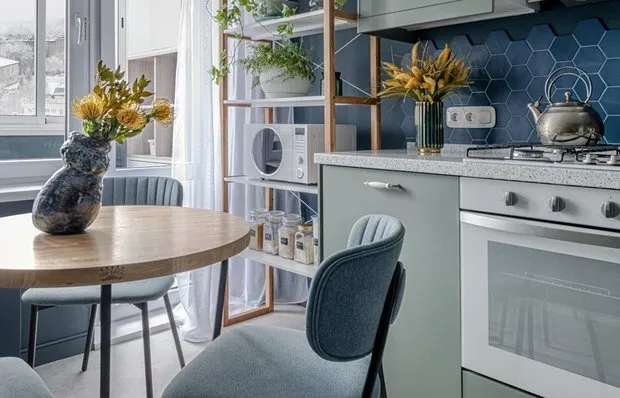 8 Brilliant Design Hacks Used by Professionals in Their Projects
8 Brilliant Design Hacks Used by Professionals in Their Projects Kitchen Backsplash Design: Main Trends of 2022 + Beautiful Examples
Kitchen Backsplash Design: Main Trends of 2022 + Beautiful Examples All You Need: 11 Classy Tables and Chairs for the Kitchen
All You Need: 11 Classy Tables and Chairs for the Kitchen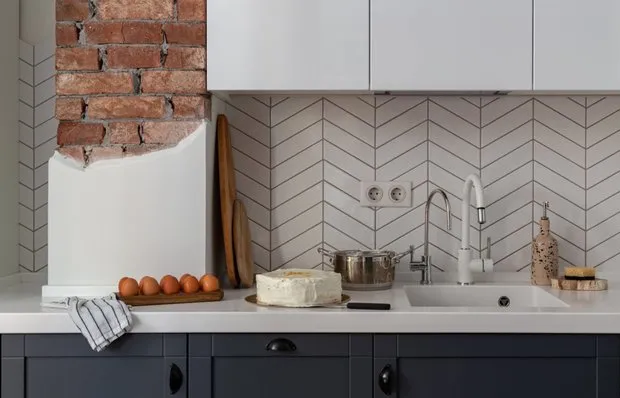 Socket Placement Schemes on the Kitchen + Detailed Guide from a Professional
Socket Placement Schemes on the Kitchen + Detailed Guide from a Professional Decor and Lighting for Your Kitchen You'll Want to Buy Now
Decor and Lighting for Your Kitchen You'll Want to Buy Now